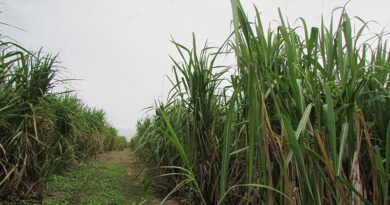Water security identified among six major global systemic risks for investors

Water security has been identified as one of the six ‘global systemic risks’ by the World Economic Forum (WEF), which in a white paper has outlined a governance framework to enable the investment community to address the annual investment gap of $6.27 trillion required to mitigate these risks.
The other systemic risks are climate change, population growth, geopolitical uncertainty, negative interest rates and technology disruption. The white paper – ‘Transformational investment: Converting global systemic risks into sustainable returns’ – states that while there is an investment gap to the tune of $2.4 trillion for climate change, the annual investment gap for water security is $670 billion.
According to the white paper which was jointly produced with Mercer, cross-sector dependency on water by households, agriculture, industry, energy and transport make water scarcity and threats to water quality a significant investment risk.
Governments are increasingly partnering with institutional investors to protect functioning natural resources and to develop water infrastructure to secure the supply and distribution of clean water. These investors provide the knowledge, technology and capital that focuses development on long-term sustainable solutions.
Additional investment needed to achieve the Sustainable Development Goal Six of ensuring availability and sustainable management of water and sanitation for all is approximately $1.7 trillion until 2030 – about three times the current investment levels.
“However, the broader needs for water infrastructure range from $6.7 trillion by 2030 to $22.6 trillion USD by 2050. In addition, water-related losses in agriculture, health, income and property could result in GDP declining by as much as 6 Per cent by 2050 in some regions of the world”, noted the paper.
Investors in water infrastructure and solutions must be sensitive to the human, cultural and social dimensions of water, the paper states.
“With increasing population growth and growing competition over scarce water resources, we are likely to see other day-zeros as we did in Cape Town in 2018. In many regions, vulnerable populations (low-income communities, women and children) have had to pay the most and travel the furthest to access water”.
While the UN declared water to be a human right in 2010, more generally, the private sector must be aware of the social dimensions to water security. Ways to mitigate water security risks include understanding historic regional water conflicts and issues, working with water regulators to provide water lifeline rates to protect vulnerable communities and working with regional stakeholders (including hydrologists, investors, businesses and water managers) on diversifying supply, sustainable water management and long-term planning.
The multiplicity of stakeholders, including investors in water-related assets, requires robust governance to align investment time frames. While local organisations may be best placed in terms of local experience and perspective, the scale of transformational water investment demands a collective effort. There are 286 transboundary river and lake basins and 592 transboundary aquifers shared by 153 countries. For example, the River Nile – 6500km long – flows through 11 nations.
Water risk may sometimes necessitate partnering with individual governments and country stakeholders but it often requires collaboration between governments that can be facilitated by large asset owners.
Other challenges faced by long-term investors can include contract renewal uncertainty due to changing governments, and droughts that can temporarily dislocate the supply and demand of clean water, among other factors.
Long-term asset owners are finding ways to engage investee companies on better water stewardship, to build sustainable solutions intended to support sustainable water management and to deliver clean water over multi-decade time horizons. Acting as responsible stewards and building trust with governments and citizens can be rewarded with attractive risk-adjusted investment returns.
The white paper noted that there are many opportunities and solutions related to water security. A large number are related to ways of making food and energy production more efficient and mitigating water pollution.
Food production takes up 70 per cent of human water use globally. The agricultural sector is transforming how it uses water and how it affects water supplies. Solutions include drip irrigation, satellite monitoring, precision soil moisture and nutrient monitoring. Likewise, energy production has traditionally required vast amounts of water.
Newer forms of energy production using less water and limiting pollution are gaining share.
Other opportunities focus on water quality, human health or providing water infrastructure to communities and industry. Innovative developments include distributed small-scale water utility solutions for individual sites or buildings and energy production from wastewater.
The oil and gas, semiconductor and chemicals sectors all consistently rank high in terms of water-intensive operations and weight in the major global indices, and are likely to affect the quality and quantity of local water resources, the white paper added.



